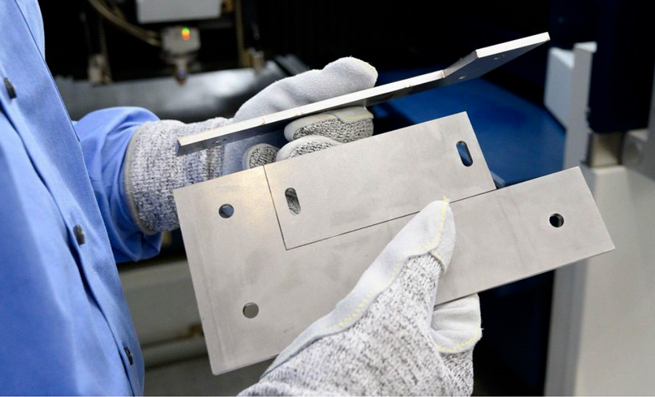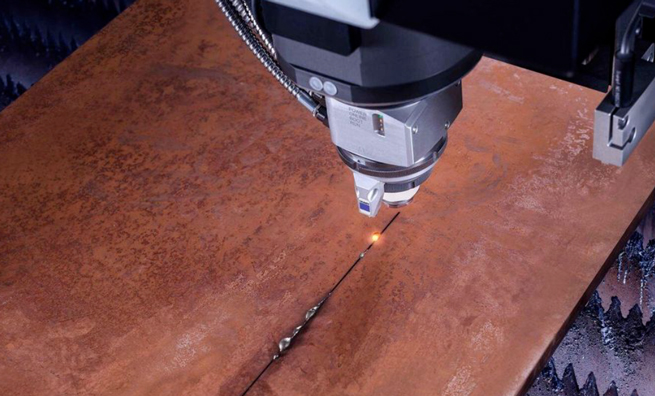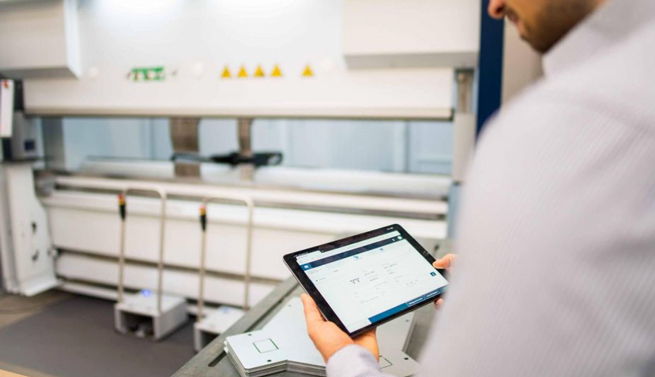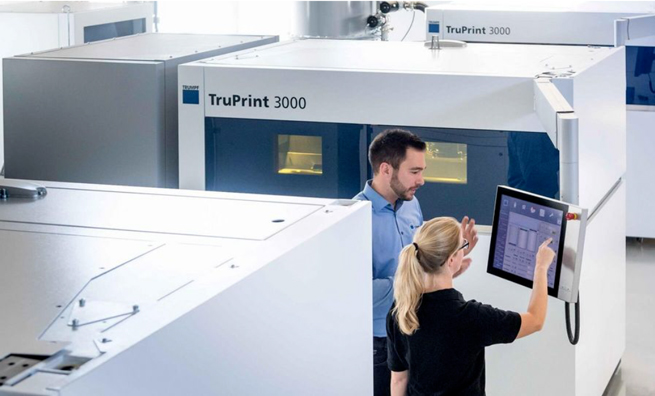
In the sheet metal processing industry, more and more companies are looking for ways to reduce their carbon footprint. At the same time, the Russo-Ukraine war led to a sharp rise in the price of raw materials. TRUMPF offers technologies that help customers increase the use of raw materials in their production processes – from scrap skeleton recycling to additive manufacturing.
The Russian-Ukrainian war caused energy costs to rise continuously, and the price of raw materials for sheet metal processing hit a record high. However, even without these factors, the use of metals such as steel, copper, and aluminum needs to consider the impact on the ecological environment. Therefore, reducing material consumption can achieve the effect of killing two birds with one stone. As a solution provider in the sheet metal processing industry, TRUMPF has developed a number of technologies to help customers reduce raw material waste and improve production efficiency.
01
nano microconnector
Tighter nesting spacing for less scrap
Nano-micro-connection is a new process used by TRUMPF for Laser cutting, which can help customers reduce material consumption in sheet metal processing. Generally, when a laser cuts a part from a sheet metal, the part remains attached to the rest of the material by means of micro-joints. Prevents parts that have been cut from lifting when other parts of the sheet are cut. Nano micro-joints allow for smaller fixing points, minimizing the connection of the part to the remaining sheet metal. The use of nano-joints not only increases process reliability, but also saves material, as parts can now be nested directly next to each other in the sheet metal. Additionally, production workers are able to more easily remove parts after cutting. Unlike micro-joints, workers can remove the part from the rest skeleton with little effort. This helps to improve work efficiency.
With TRUMPF NanoConnect, laser-cut parts can be nested next to each other in sheet metal.

02
Drop&Cut
Make full use of leftovers
Many TRUMPF Laser cutting machines have a Drop&Cut function. This enables users to get the most out of leftovers. The production worker only needs to find the suitable remnant skeleton that has been added and place it in the machining area of the machine tool. An integrated camera then transmits an image of the remaining material to the display in the control panel. Via the touchscreen, the operator can now position additional parts for cutting on the remaining sheet metal. The operator then fires up the machine, and the laser cuts the shape from the remaining sheet metal. This is ideal for the production of small batches of parts – for example spare parts. Drop&Cut can reduce scrap by up to 14%.
03
CoolLine
Improve the output rate of each sheet metal
CoolLine is another feature that helps users reduce material waste during laser cutting. This feature automatically sprays water on the workpiece, allowing optimal cooling of the cutting process as the water evaporates. This prevents overheating, which can negatively affect cutting accuracy. The result is improved component quality and reduced scrap rates. In addition, parts can be nested more closely on the sheet metal, which also reduces material consumption.
04
AI smart eye cutting
(Active Speed Control)
Automatic control of machine tool cutting feed rate
Another TRUMPF technology that can help users reduce material waste is AI Smart Eye Cutting. This function automatically adjusts the cutting speed during laser cutting. For this purpose, sensors monitor the cutting beam from the center of the nozzle. By measuring so-called processing radiation, the system is able to determine whether the molten material is forming as intended, and based on this, calculates the fastest possible cutting rate and makes the necessary adjustments – a process that repeats hundreds of times per second. In addition, AI Smart Eye Cut automatically adjusts many other process parameters, including the position of the laser beam. The system notifies operators of any errors, helping the company prevent defective parts from being produced and avoid material waste.
TRUMPF's AI Smart Eye Cutting (Active Speed Control) automatically adjusts the feed speed during the laser cutting process.

05
condition monitoring
Detect equipment failures before rejects are generated
Less scrap also means lower material consumption. TRUMPF offers various solutions for continuous monitoring of plant data. All of these help reduce residual material. For example, condition monitoring can provide early warning of failures. For this purpose, the customer machines are digitally connected to the TRUMPF IT system. All connected machines send real-time data to the TRUMPF Predictive Service Center for evaluation by intelligent algorithms. Any deviations are detected immediately. For example, if a computer room becomes too pressurized, operators are automatically notified and can schedule maintenance accordingly. This helps companies reduce scrap, increase machine availability, and prevent unplanned downtime.
Condition monitoring—monitoring equipment condition data—helps companies reduce scrap and save material.

06
3D printing
Use materials only where needed
Additive manufacturing — better known as 3D printing — is the most economical of all processes in terms of material waste. This is because 3D printers consume only the exact amount of material needed to produce a part. Under the conditions of laser metal melting (LMF) technology, the laser beam inside the 3D printer processes (prints) the part layer by layer. Any excess powder can be recycled and reused. In contrast, traditional machining processes, such as milling, generate large amounts of chips. And depending on the part being produced, up to 80% of the raw material is wasted. In addition, 3D printing also reduces weight by machining only necessary functional structures.
3D printing helps reduce material consumption, as the device consumes only what is needed to produce the part. Traditional machining processes such as milling often waste up to 80% of raw material.

07
Upcycling
Refurbish a machine instead of scrapping it
Although a piece of equipment may no longer meet the latest standards in sheet metal processing, that is not a reason to scrap it. In many cases, the machine can be retrofitted with the necessary technology. This not only saves money, but also material – after all, a standard machine tool can weigh up to 12 tons. TRUMPF offers various solutions to help customers restore old machines to standard specifications. Among them is OPC UA Retrofit. This enables companies to equip older machines with the OPC UA interface - the international, platform-independent standard for data exchange in manufacturing. A similar upgrade is Trumpf's Windows Retrofit. This helps companies ensure that older machines continue to meet the growing demands placed on IT systems within their corporate network. TRUMPF also supplies the Smart Power Tube IoT Box for its CO2 laser equipment. This means that companies can connect old machines to the TRUMPF IT system. If a company, despite its best efforts, finds itself no longer able to use an older TRUMPF machine, the TRUMPF Resale Center can help. The team at the resale center refurbishes the machine and puts it on the market. In this way, future buyers not only save money but also reduce material waste.
